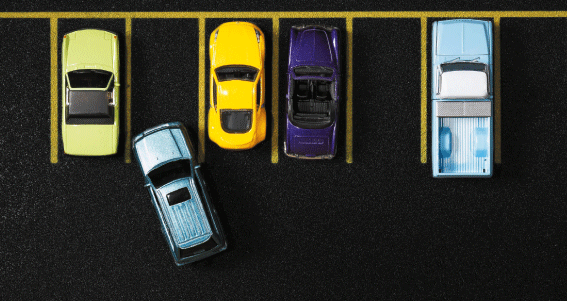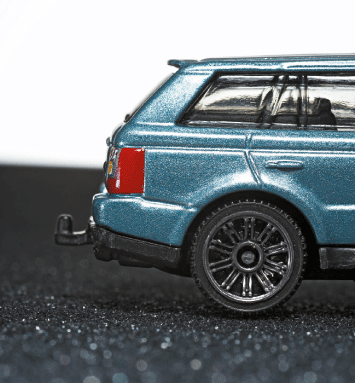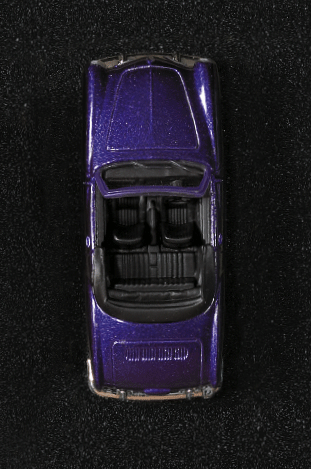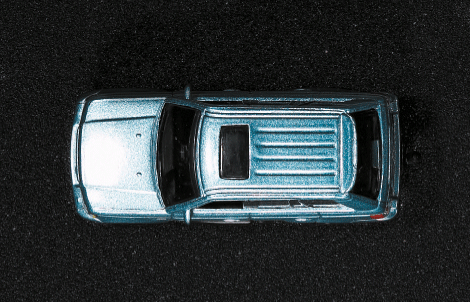
The Car Accidents
You Don't Think About
 |
Every year, tens of thousands of children are rolled over,
caught in power windows, and even unintentionally left in vehicles to die.
But these incidents are as preventable as they are upsetting.
This is what every parent needs to know now.
One afternoon in February 2009, Candace Adair lived through a nightmare: Her 22-month-old son, Shane, was accidentally backed over by a pickup truck in a neighbor's driveway. It happened in the time it took her to run inside their house and double-check that the stove was turned off.
"I heard my sister screaming, and I'll never forget the terror in her voice," says Adair, who was preparing to take her five children to a park near her Phoenix home, along with her sister Tabitha and her own six children. "But nothing could have prepared me for the horror of seeing my son lying in a puddle of blood, his skull smashed. My neighbor was just standing beside his truck in shock. He hadn't even seen Shane run behind it."
When Shane arrived at Phoenix Children's Hospital, Adair and her husband, Charles, were told that he wasn't expected to live through the night. "The E.R. physician said he wouldn't even try to repair the damage because he didn't want to disfigure our son's body for the funeral," says Adair, who promptly got a second opinion.
"When I first saw Shane, I felt his chance of surviving was less than 30 percent because of the severity of his injury," says the second doctor, P. David Adelson, M.D., a pediatric neurosurgeon and director of the hospital's Children's Neurosciences Institute. He used a whole-body cooling technique to help reduce the swelling in Shane's brain.
Shane was in a coma over the next two weeks, his family constantly by his side. One day he opened his eyes and smiled. Within a few weeks he was talking and playing games with his siblings. Two months after the accident—on his second birthday—Shane was sent home. He still needs weekly therapy, and he struggles with light sensitivity,
headaches, and some paralysis on the left side of his face. But his parents are grateful that their little boy is alive.
However, many kids are not as lucky. Two hundred and sixty-two children under age 14 were killed in non-crash incidents in driveways or parking lots in 2007, reports the National Highway Traffic Safety Administration (NHTSA). Approximately 115,000 more kids suffered injuries. "Protecting children from these accidents is an important new frontier in auto safety," says Parents advisor Dennis R. Durbin, M.D., co-scientific director of the Center for Injury Research & Prevention at The Children's Hospital of Philadelphia. "Because car-seat and booster-seat use has gone up, we've seen great progress in reducing the number of children killed or injured in on-road crashes. Hopefully, we'll see the same progress as we focus more attention on accidents that happen off the road."
The Cameron Gulbransen Kids Transportation Safety Act was passed in February 2008. Named for a 2-year-old boy who died after his father accidentally backed over him with his SUV, it requires the U.S. Department of Transportation to create regulations for new vehicles that will reduce the most common threats to children. These are blind zones that may cause a driver to back over or roll forward onto a child, power windows that can close on a child, and gearshifts that a child can accidentally activate. Unfortunately, this new law is still working its way through the department that decides on specific rules the auto industry must follow, and it will likely take several more years for the safety features to be standard in new cars. Thankfully, in the meantime, there are steps that every parent can take to make their cars—and children—safer.
The Problem
Blind Zones
When Shane finally came home from the hospital, the entire neighborhood was waiting to welcome him—including the driver of the truck who had backed over him. "He couldn't apologize enough, and he broke down in tears. He swore he'd pray for Shane every day of his life," recalls Adair.
The Adairs' neighbor admitted he'd been in a hurry and hadn't turned around or carefully looked in his rearview mirror behind his truck when he pulled out that day. But based on where Shane was found, police could tell that he was out of the driver's line of sight. Back-overs account for 42 percent of non-traffic fatalities each year, and front-overs make up another 22 percent, according to KidsAndCars.org, a nonprofit organization that works to prevent such injuries to children.
Blind zones are the cause of these accidents. All vehicles have areas in the front and back that you can't see when you're in the driver's seat. (In front, the area is six to eight feet long and as wide as the car. Behind the vehicle, it's seven to eight feet wide and between 20 and 40 feet long.) The bigger the car and the higher off the ground the driver sits, the bigger the blind zone in front of the vehicle.
Prevent an accident For one thing, always walk around your vehicle before you drive, though kids can still dart behind the car once you start moving. Many new vehicles come equipped with audio sensors that beep with increasing frequency as you back toward an object, but experts say that these systems alone don't provide enough information. "The ideal setup is an audio sensor and a camera with a wide-angle rear view that automatically activates as you shift into reverse and displays the view in the dashboard," says Don Mays, senior director for product safety for Consumers Union, the nonprofit publisher of Consumer Reports. Those are built in (or options) in many new cars, but you can also retrofit your older car with an audio backup sensor kit (prices range from $50 to $250) and a backup video system (which starts at less than $100 for the camera and dashboard monitor and can cost more than $1,000 for a complete video navigation system). You can buy these and have them installed at an electronics store or at your car 
dealer, or you can install them yourself.
Although technology is available to help stop accidents, it only goes so far in protecting our kids. "Teach your children that even parked cars may suddenly move, and that cars aren't toys," says Parents advisor Martin Eichelberger, M.D., founder of Safe Kids Worldwide, in Washington, D.C. "Reminding kids about the dangers of cars really can help to save their lives."
The Problem
Power windows
How many of us have left our kids in the car for a minute or two while we were getting cash from the ATM or running into the dry cleaner? Greg Bauer of Dubois, Indiana, was mowing his neighbor's lawn when his 5-year-old son, Reece, came over and climbed into his truck. Since Bauer was almost finished, he let
his son stay and put the key in the Accessory position of the ignition switch so that Reece could listen to the radio. "I didn't think twice about this because I knew Reece wouldn't be able to accidentally turn over the motor and start the vehicle," says Bauer. "I had no idea the windows would even still work."
When Bauer went to put his mower in the back of the truck, he found his son with the window up to his neck, not breathing. Reece had leaned out the window and his knee accidentally hit the power-window button, causing the window to go up. Bauer acted fast: He let the window down, administered CPR, and then, because he had no cell-phone service, drove Reece to their home. His wife, Jennifer, called 911. Reece was pale, making little noises but not opening his eyes. "The hour it took for the ambulance to come to our house and then get to the nearest hospital was sheer torture," recalls Jennifer. "Reece was airlifted to a bigger hospital but there wasn't room for us in the helicopter, so we had to drive. By the time we got to the hospital, our son was yelling for us. It was the most joyous sound we've ever heard."
Reece is now a happy, healthy 9-year-old, but it's unnerving to think of how differently things could have gone. "Electronic car windows have 30 to 80 pounds of force, and it takes only 22 pounds of force to break the trachea of a small child," says
Janette Fennell, founder and president of KidsAndCars.org, which reports that at least 35 children have been fatally injured in power-window accidents in the last decade. Just as in
Reece's case, it's easy to accidentally close a window on a neck or an arm. And most windows don't automatically stop and reverse when they hit something solid. Fennell would like to
see this changed. "There probably isn't a new garage-door opener or elevator today that doesn't automatically reverse if an object is in its path. So why do we allow our car windows to be potential guillotines for our kids?"
Prevent an accident Start by never leaving children alone in a vehicle and never leaving the keys in the vehicle when kids are nearby. Use the window lockout switch, if your car has one, to prevent anyone but the driver from having access to power windows. Manufacturers are legally required to equip all new passenger vehicles with lever window switches by October 1, 2010. These are safer because they must be pulled up to close, making it much more difficult to raise the window by bumping it with an elbow. But that won't totally solve the problem. "Many times a driver operating the windows from the front seat can't see that a child in the back has his hand or even his head out the window and could get trapped," says Fennell. "This can be especially dangerous if you're using the one-touch control that automatically raises the window all the way up."
Consider this simple, commonsense strategy: Make a habit of issuing an "All clear" warning. You can't always turn around while you're driving, but if your child can talk, you can get verbal confirmation that all hands are away from windows before you roll them up or down.
The Problem
Runaway vehicles
Elizabeth Garcia, of Gainesville, Florida, had a leak in one of her minivan's tires, so she went to fill it with air at a gas station. She had her 4-year-old son, Joel, and her 19-month-old, Zachary, buckled in their car seats. She took the keys out of the ignition and was kneeling down, filling the tire, when the van started to move backwards. She jumped up to see that Joel had gotten out of his car seat and climbed into the driver's seat, accidentally locking the doors in the process. Then he put the gearshift in reverse. "I'm not sure how I did it, but I held the van and used all my strength to slow it down while banging on the window and asking Joel to open the door," Garcia recalls. He finally did. She hopped in and stepped
on the brake pedal before the van backed into the street. "It turns out that my van's steering wheel doesn't lock in place and you can put the car into gear without having the key in the ignition," she says.
Joel and Zachary could have been among the 100 children who have died in a runaway car since 2002, according to KidsAndCars.org. "When a car starts rolling, kids sometimes become scared and jump, or fall, out of the vehicle and get run over," says Fennell.
Prevent an accident It's always a good idea to pull up your emergency brake whenever your vehicle is parked, and in some jurisdictions it's illegal not to do so. However, engaging the emergency brake does not guarantee that a vehicle can't be shifted into gear.
In 2006, the auto industry, along with the NHTSA, asked manufacturers to add a brake transmission shift interlock system (BTSI) to all new models with automatic transmission that are sold in the U.S. No matter what position the key is in, BTSI forces the driver to have a foot on the brake when shifting out of park, keeping kids from unintentionally putting a vehicle into gear. About 80 percent of cars made in 2006 and beyond include this safety feature. In models that don't, you must rely on the emergency brake to keep the car from moving.) Ask your dealer or manufacturer whether your car has BTSI. Or try this test:
1 Make sure no one is around your car. 
2 With your car on a flat surface, get in and make sure that the emergency brake is on to prevent the vehicle from moving as you test the different key positions (most cars have four: Off,
Accessory, On, and Start).
3 Put the key in the ignition switch and turn it to the Accessory position.
4 Try to shift your car into gear without putting your foot on the brake.
5 Repeat this test in all key positions.
If your car shifts into gear without your foot on the brake pedal, then your car can be put into gear unintentionally, by you or a child.
The one comfort to take from these
upsetting stories: There are ways to make sure that they don't happen to your family. "Parents need to tell their kids to stay away from cars, and they should never leave them alone in cars, period," advises Dr. Eichelberger. "That's the best prevention for injuries like these, and it doesn't cost a cent."